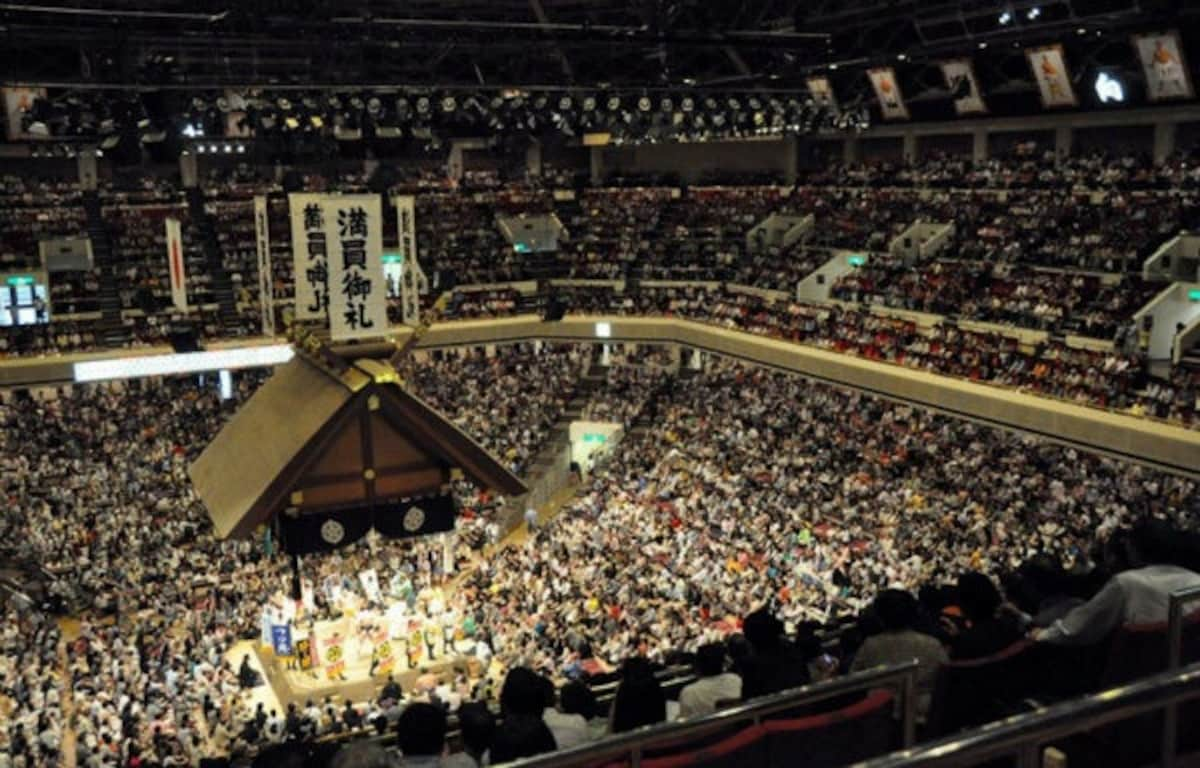A Day at the Sumo
Like visiting Kyoto, climbing Mount Fuji and catching a Japanese baseball game, watching a live sumo match is one of those things that "must be done" while in Japan.
By Michael Kanerthttp://www.thekanert.com/writing/life-in-japan/sumo/
There are six Grand Sumo tournaments throughout the year, half of which take place in Tokyo’s Ryogoku Kokugikan. The Kokugikan is a broad, squat, green-roofed construct adjacent to Ryogoku Station, two stations east of Akihabara on the JR Sobu Line. The nearby streets are lined with basketball-sized statuettes of sumo wrestlers, the local shops adorn their signs with wrestlers’ images, and larger-than-life portraits of historical wrestlers hang above the ticket gates in the station.
Each Grand Sumo tournament begins on a Sunday and ends 15 days later on another Sunday, with ticket sales beginning a month prior to the tournament. Advance sales close when the event begins, though if you move fast, you can take advantage of the limited set of tickets available on the day.
http://www.thekanert.com/writing/life-in-japan/sumo/
If you arrive at the Kokugikan in the morning, you can watch a few of the low-ranked wrestlers filter into the arena alone or in pairs, unassumingly walking down the street in their cotton yukata. You'll also find staff eager to offer directions, pamphlets and schedules in English.
The preliminary bouts between low-ranking and novice wrestlers begin as early as 8:30 a.m. Stepping into the main level of the arena, the floor seems to fall away as a solid angled roof, seemingly torn from the top of a shrine, hovers above the ring before you. The aisles beneath are narrow and treacherous, while the corners of the arena are cut by cinder-block halls through which the wrestlers representing the east and west sides enter the ring.
http://www.thekanert.com/writing/life-in-japan/sumo/
In the early hours, most of the Kokugikan’s 13,000 seats are empty, and regardless of where your seats actually are, the staff usually won't bother you if you take a seat on the tatami and zabuton (straw mats and cushions) three paces from the ring. Just don't eat or drink in the closest seats. Furthermore, the ring is considered sacred, and cannot be touched by spectators.
Some of the wrestlers in the preliminary bouts look as though they couldn’t be more than 14 years old, adjudicated by school-aged referees who sometimes have to stop a bout to walk the uncertain contestants through the formalities. Each wrestler is announced by a fan-bearing, singing official—some remarkably good, a few comically bad—who describe each contestant as representing nishi (west) or higashi (east). The slab-like, cracking ring, the dohyo, is meticulously swept after each match.
http://www.thekanert.com/writing/life-in-japan/sumo/
It's a very intimate feeling sitting on the open mats surrounding the ring, almost close enough for the wrestlers to fall on you. There are also seats divided into quadrants by ankle-high aluminum rails, where eating and drinking are not only allowed, but encouraged, as each square is equipped with teacups and bottle openers.
If you step outside toward the middle of the day, you'll find crowds gathered on the steps to watch the arrival of the senior-division wrestlers. If you try to take ring-level seats from the time of the juryo-division ring-entering ceremony at 2:15 p.m., however, you will find that the staff are no longer accommodating of arbitrary seating: Although the arena might still be half-empty, they will track you down like homing missiles until you have no choice but to retreat to your actual assigned seats.
The real event begins with the entrance of the top-ranked wrestlers, who stream out of the concrete halls at 3:40 p.m., forming a brightly-colored circle atop the dohyo. Then comes the ceremonial entrance of the yokozuna, who appears flanked by two attendant wrestlers. As the contestants rise in rank, the referees, too, become older and more elaborately attired, the highest-ranking matches adjudicated by sprightly grandfathers who leap out of the way of 150-kilogram (330 lb) piles of colliding flesh. The proceedings are sometimes interrupted by attendants circling the ring with flags announcing a wrestler’s sponsors.
Some of sumo’s rituals can be confusing for the uninitiated. Before each bout, sumo wrestlers clap their hands, stomp their legs, and then rinse out their mouths with water before purifying the ring with salt. The bout is meant to begin when both contestants' fists touch the ground on or behind their respective starting lines. But more often than not, even when they’ve put their fists down, the wrestlers will just look at one another, stand up, and grab more salt. The higher the rank, the more times they’ll do this. Some wrestlers use this interval to pump up and intimidate, but most of the time it just draws out suspense prior to the thirty-second payoff. However, eagle-eyed fans will note that the referee always turns his fan sideways before the wrestlers are allowed to begin the match, marking a clear start signal.
The arena will often only fill up completely as the biggest matches approached around 5 p.m. Each day’s match-ups are determined based on the previous day’s standings, frequently pitting wrestlers with similar records against one another, with the yokozuna competing in the final match or matches.
After a long day, once the final athletic giant has been pushed from the ring and the fans toss their zabuton cushions in approval or disbelief, a lower-ranked wrestler marks the end of the event with a series of moves with a Japanese longbow, and it's time for the fans to file out of the arena.
If you'd like to check out sumo for yourself, you can find plenty of information in English at the Nihon Sumo Kyokai website.




